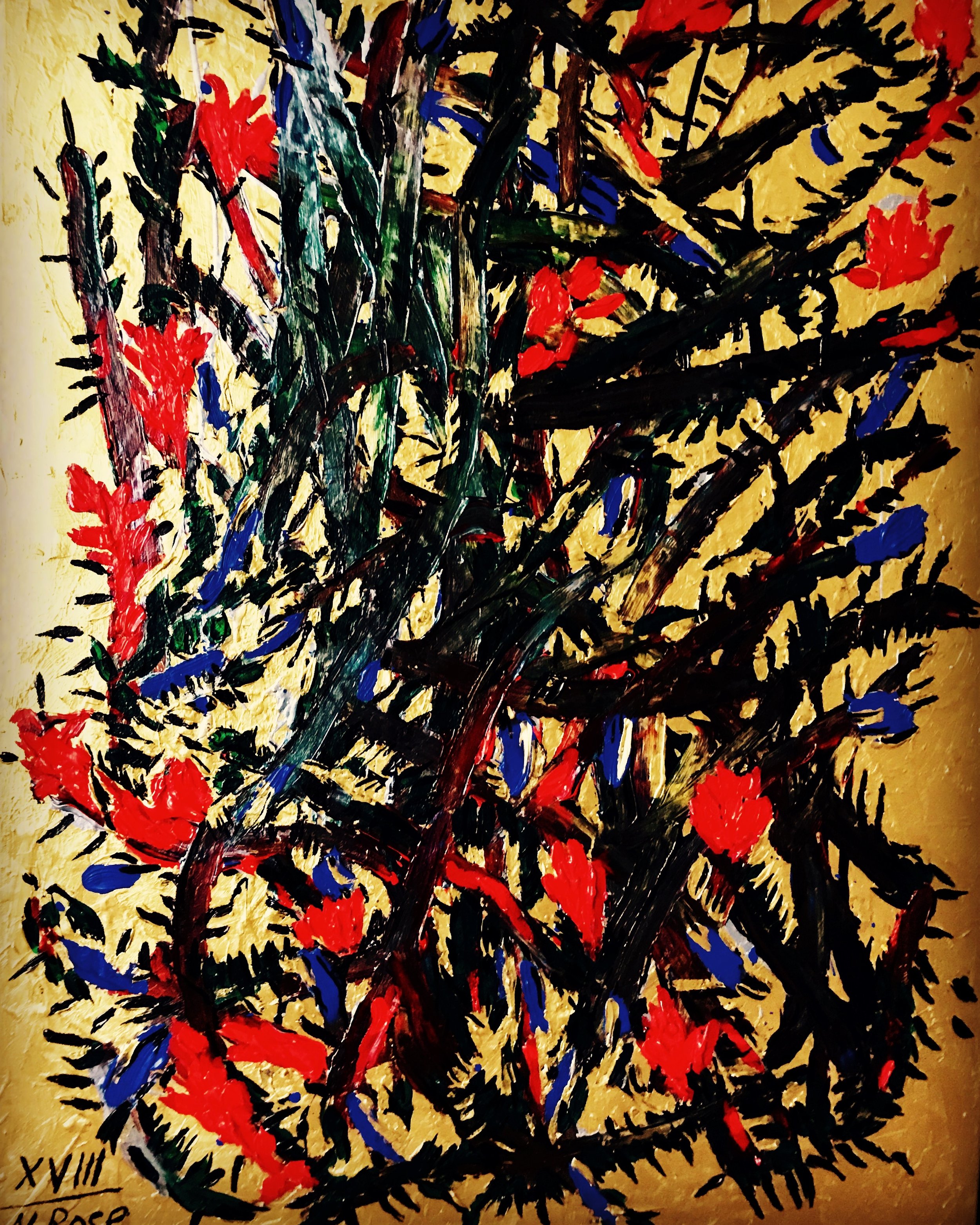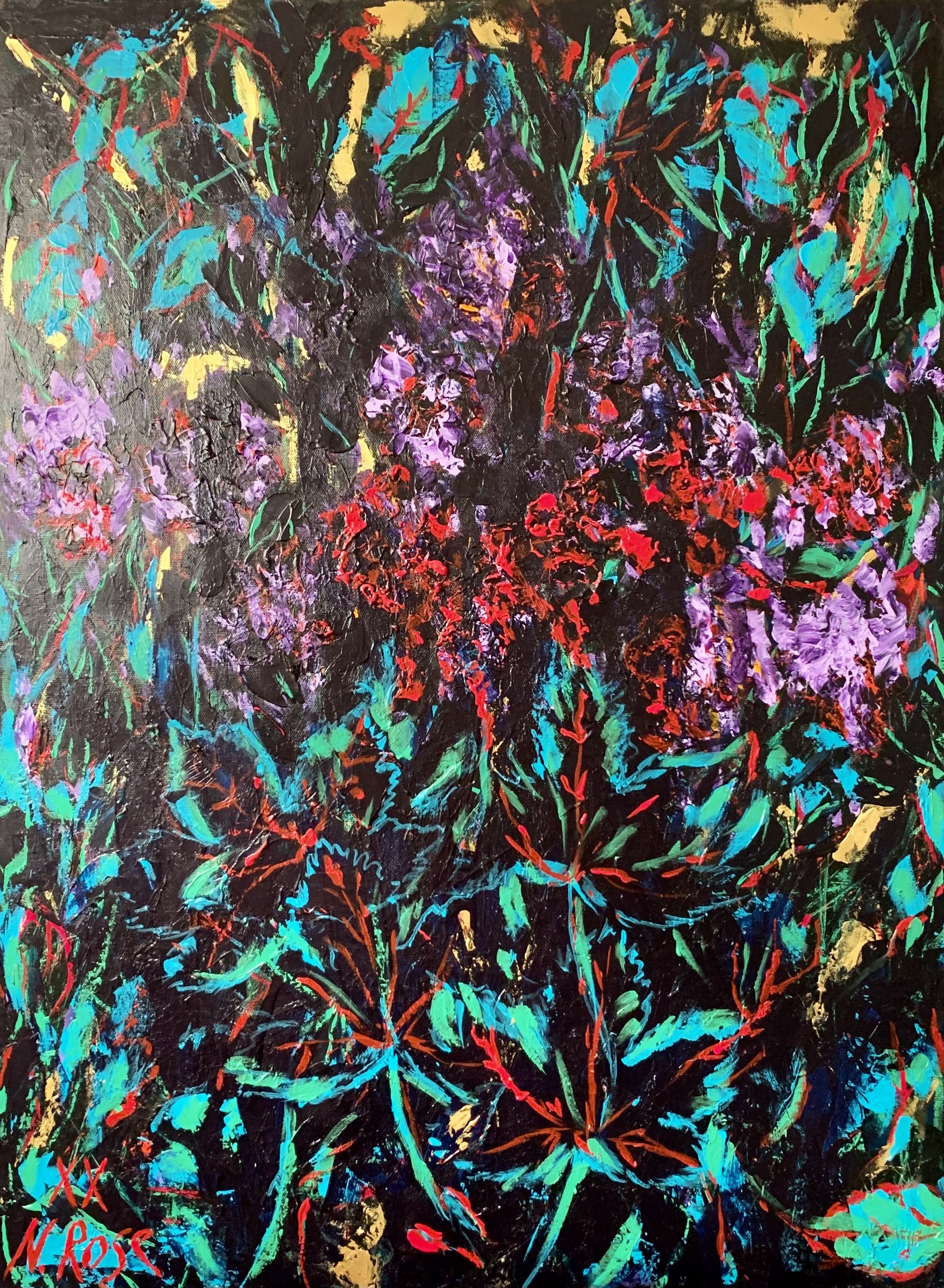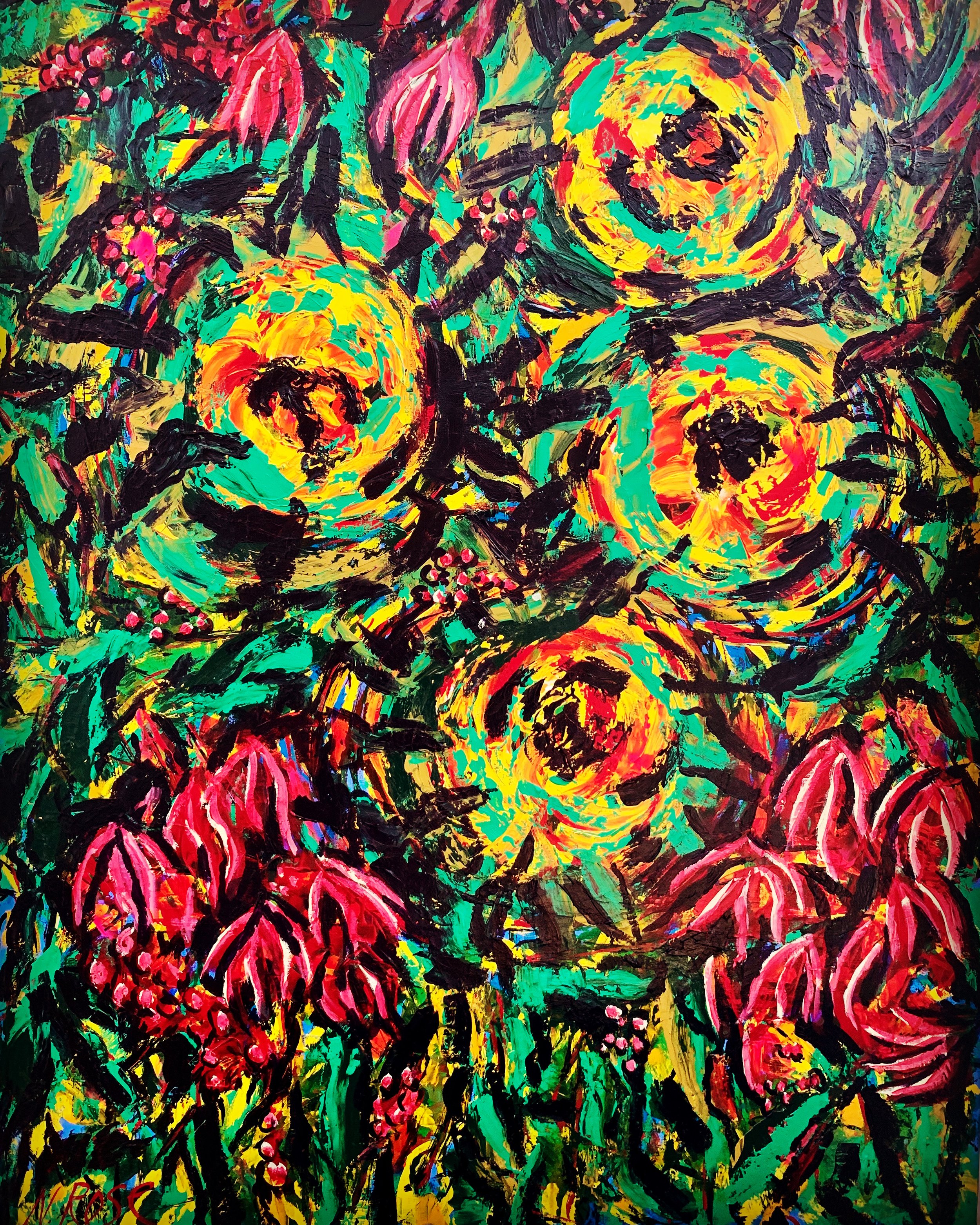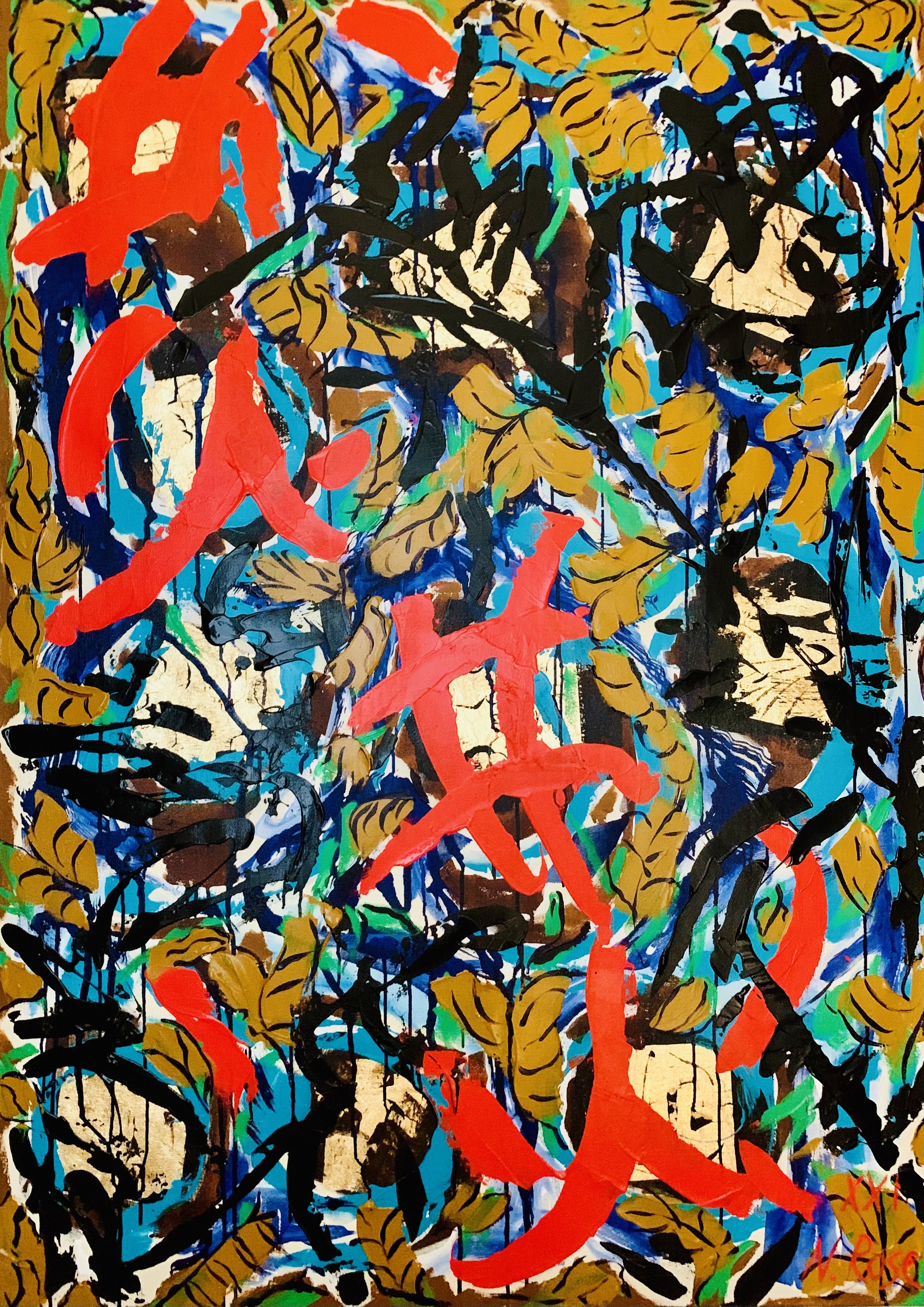Interview with Natalia Rose
Natalia Rose is a Danish artist best known for her semi-abstract works which feature pictograph-like symbols painting with broad and heavy brushstrokes. The artist raises questions about the nature of communication and the way in which one can express abstract and conceptual ideas through colour and iconographic markings. For example, in her painting “I” (2016), the artist uses only essential strokes to spell out his name and create patterns of letters across the canvas. Born in 1953 in Stavropol, Russia she studied at the Moscow State University and later at the University of Copenhagen. In 2014 the artist held her first exhibition in Copenhagen and since in New York, Paris, Amsterdam, Sankt Petersburg and London. Today, her works are held in the private collections across world - in USA, Canada, Spain, Sweden and Denmark among others. Natalia Rose lives and works in Copenhagen, Denmark.
How would you describe yourself and your artwork?
I think of myself as a translator of culture and ideas but with enough ambiguity in my expression to leave room for interpretation. For me personally, I appreciate that whatever meaning you derive from art is ultimately a projection of your inner self, your dreams, desires and fears. Delacroix said that a good piece of art can say more than any text, and I think that's very true. Kandinsky compared art to language with a deep interconnection between the heart, mind and soul. I chose painting over writing as my form of expression, because art captures more nuances and emotions than words can. I am also impatient and crave fast results, and painting is the only medium where my ideas find their expression at the same speed as they appear in my mind. They are most often based on things I read, culture, literature, current and past history, and my canvases are large because I need space for every nuance of what I'm trying to convey.
How do you go about beginning a new piece? Do you have an idea already in mind, or do you start working with materials or sketches to find the departure point?
When I get en idea, I am starting to paint directly on canvas. I am not doing sketches, just painting. My style of painting has a story-telling attribute to it. The paintings are layered and have taken several reiterations to achieve their final result. When I paint, I layer and overpaint, add, subtract, erase and elaborate. Works can take months, even years, to complete. Each of my works is an expression of many paintings below the surface and you can find remnants of different paintings in some of them. I don't believe in the notion of a 'right first time' when it comes to painting. Instead, I believe new meaning appears dynamically, and that you have to let go and let the work go on to complete itself. Sometimes over years.
When do you think your most prolific time of day or week is?
I am producing my ideas mostly late in the evening, when I am reading, watching a good film or just thinking. I enjoy to be alone, being in the process of thinking. But I need natural light to paint, that is why the painting process must start, when it is still the sunlight.
My favourite part is the intermittent stage between having started with a certain level of direction, and then letting go and seeing what happens next.
What is a barrier you as an artist overcame? Is there anything that enabled you to develop your work as an artist in your life?
Growing up in the Soviet Union, being an artist was associated with high uncertainty. This made me discount art as a career path. Even so, I never stopped thinking creatively and cultivating images of the art that I wanted to create. However, it wasn't until I had fully explored what a conventional career meant - or lacked, for that matter - that I came to understand how much I longed to reconnect with that part of myself. Once I did that approximately ten years ago, I felt that I became a whole person.
Did you have an idea of what you wanted to create right from the beginning?
Yes, but while I might give the opening strokes direction, the painting, as it progresses through my mind and hands, determines its own process to completion and this puts me in a state of complete creative freedom.
It is boring, when painting seems to be all too well planned.
I like the words of Philip Guston: "I mean there is a forgotten place of being and things, which I need to remember. I want to see this place. I paint, what I want to see.
What is the meaning or creative inspiration for your work? We’re curious what the narrative or story is to what you are producing?
With constant motion and impression intensity, we experience overwhelm in the search for a tangible means of self-expression.
Complexity and lack of clarity leads to an experience of separation, loneliness, and a yearning to connect to something. Someone. While at the same time to separate and be distinguishable, differentiated.
We are held captive by a state of unrest, but in the end, beauty will save the world. This is the source of my inspiration.
Besides your artworks, are there any other things in life that your voice as an artist may consider vital or valuable? What makes you joyful and creative, in other words?
True art spreads joy and inspires other people to think deeply about the world around us, power of nature. Beauty and depth of art can make peoples to be better.
Are there any exhibitions or places where people can see these beautiful creations in person soon? Anything on the horizon?
Of course, I am planning some exhibitions i Copenhagen and Italy. For example, lifestyle fair Creative Mind in Øksnehallen, Copenhagen, Denmark 9.-10. april,
Artbook ARTISTI 2022 presentation of the volume to the press and exhibition at EFFETTO ARTE GALLERY, Palermo, Italy, in September 2022.
Instagram: https://www.instagram.com/natarose53/















